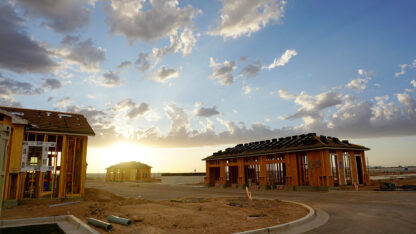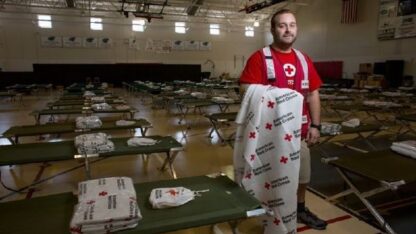Firefighters made progress and were helped by improving weather over the weekend in the battle against wildfires covering massive areas in the western United States, but further evacuations have been necessary as thousands of personnel tackle the flames.
The Park Fire, the largest wildfire in California this year, was one of more than 100 large active wildfires burning in the U.S. on Monday. Evacuation orders were in effect on 25 wildfires, according to the National Interagency Fire Center. More than 27,000 wildland firefighters and support personnel are assigned to wildfires that have burned more than 3,200 square miles (8,288 square kilometers) nationwide, the center said.
Some were sparked by the weather, with climate change increasing the frequency of lightning strikes as the western U.S. endures blistering heat and bone-dry conditions.
The Park Fire had scorched an area greater than the city of Los Angeles as of Monday, destroying more than 100 structures and threatening 4,200 more. The blaze spanned more than 575 square miles (1,489 square kilometers) of inland Northern California on Monday, according to CAL Fire.
Winds and temperatures were expected to increase slightly amid a drop in humidity, officials said in an update early Monday.
Air quality alerts were issued for Monday in the northwestern U.S. and western Canada.
The Park Fire started Wednesday, when authorities say a man pushed a burning car into a gully in Chico and then fled. A man accused of setting the fire was arrested Thursday and is due in court Monday.
Firefighters increased containment to 12% on Saturday, aided by cooler temperatures and more humidity, officials said.
Although cooler-than-average temperatures are expected through the middle of this week, that doesn’t mean existing fires will disappear, said Marc Chenard, a meteorologist at the National Weather Service’s Weather Prediction Center in College Park, Maryland.
The service issued “red flag” warnings Monday for wide swaths of Idaho, Montana, Utah and Wyoming, in addition to parts of California, meaning dry fuels and stronger winds were increasing the fire danger, the weather service said.
Officials were assessing damage across eastern Oregon and eastern Idaho from a group of blazes called the Gwen Fire, which was estimated at 43 square miles (111 square kilometers) as of Sunday.
In Oregon, the Grant County Sheriff’s Office identified a single-engine air tanker pilot who died last week while fighting the Falls Fire as James Bailey Maxwell, 74.
Maxwell’s air tanker disappeared late Thursday while he was fighting the fire burning near the town of Seneca and the Malheur National Forest. Search and rescue crews found Maxwell and his plane the following morning in steep, forested terrain.
The Falls Fire was roughly 222 square miles (575 square kilometers) and nearly 70% contained Monday. Fire managers hope to have it fully contained by Tuesday.
In California, Paradise and several other Butte County communities were under an evacuation warning Sunday. Yet the fire’s southernmost front, which is closest to Paradise, was “looking really good,” Cal Fire operations section chief Jeremy Pierce said.
Officials did not expect it to move farther into Chico, a city of about 100,000 people just west of Paradise, and crews plan to extinguish hot spots and remove hazards over the next few days, Pierce said.
The focus on saving lives and endangered property has shifted to confronting the blaze head-on, Jay Tracy, a Park Fire headquarters spokesperson, said in a Sunday interview.
More than 4,800 firefighters were battling the fire Monday, aided by numerous helicopters and air tankers. Reinforcements are expected to give much-needed rest to local firefighters, some of whom have been working nonstop since Wednesday, Tracy said.
“This fire is surprising a lot of people with its explosive growth,” he said. “It is kind of unparalleled.”
The Park Fire has drawn comparisons to the 2018 Camp Fire that tore through Paradise, killing 85 people and torching 11,000 homes.
Cohasset exhibited remnants of the devastation Sunday. Mailboxes and vehicles were covered with pink fire retardant dropped by aircraft. The husks of a washer and dryer set were surrounded by burned debris and a charred motorcycle was propped upright, balancing on rims after its tires apparently melted away.
Managing evacuation orders in the area has been complex. Authorities were about to downgrade an order to an evacuation warning for Forest Ranch when they learned a number of hot spots were reported nearby, Butte County Sheriff Kory Honea said.
“That illustrates how rapidly things can change,” Honea said. “We were all set to be able to reduce that order to get people back in there.”
In Southern California, about 2,000 people were ordered to evacuate because of a fire sweeping through the Sequoia National Forest. The wind-driven blaze ate up more than 60 square miles (155 square kilometers) in four days, Andrew Freeborn of the Kern County Fire Department said.
No fatalities have been reported in the Park and Borel fires, but some people were increasing the danger for everyone by disregarding evacuation orders, Freeborn said.
“When people are trying to ignore the orders and later call for rescue, that takes firefighters away from the task of fighting the fires,” he said. “This fire is moving at a pace and with such intensity that individuals should not be thinking they can wait until the last minute.”
The historic mining town of Havilah and several other communities were “heavily impacted” by the fires, but it was too soon to count the burned homes, Freeborn said.
Jerry White left his Magalia home of 50 years when authorities issued an evacuation warning. Years earlier White sustained third-degree burns, and the memory of that pain made him take the warning seriously.
“I don’t want to catch fire again,” White said. “It’s one of the worst pains you can endure.”









